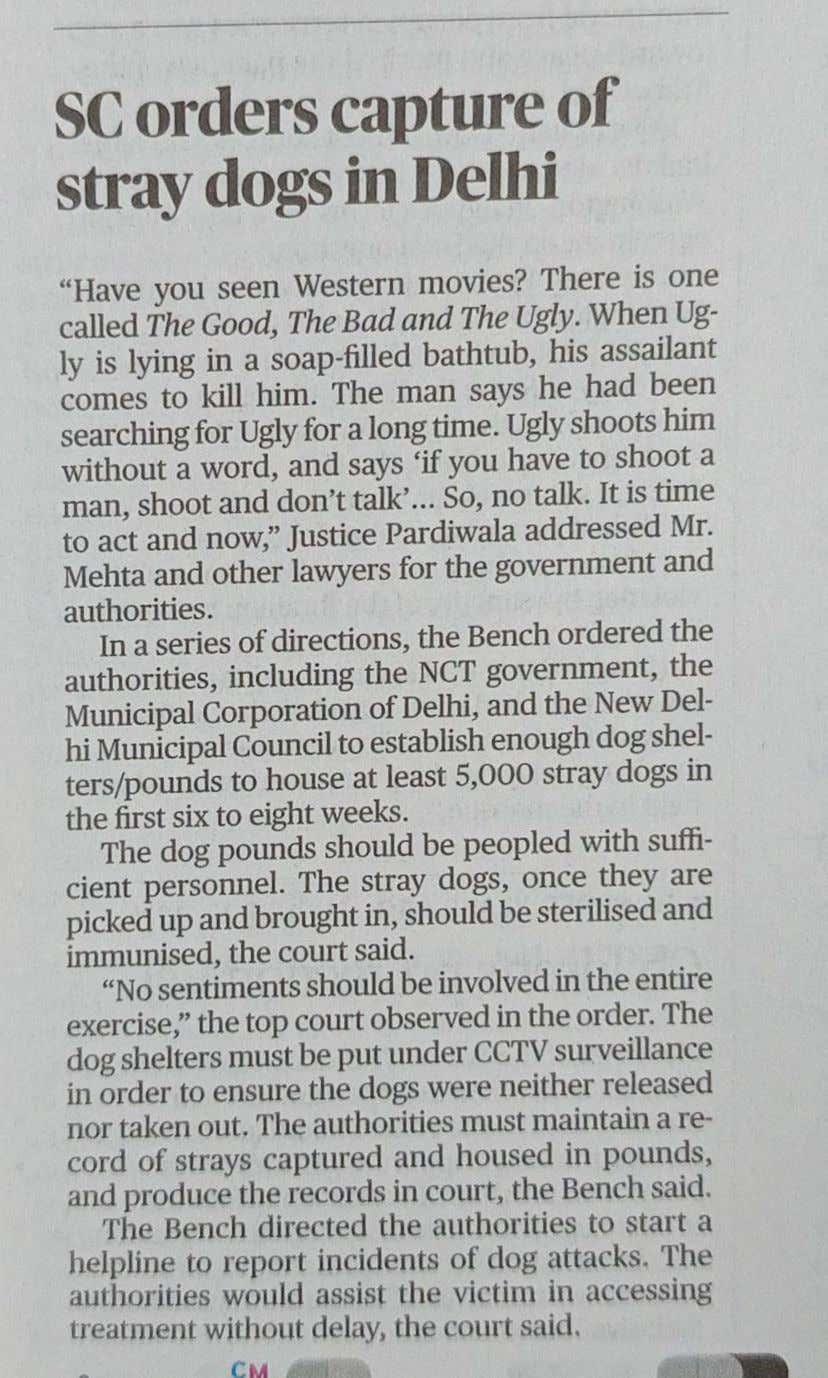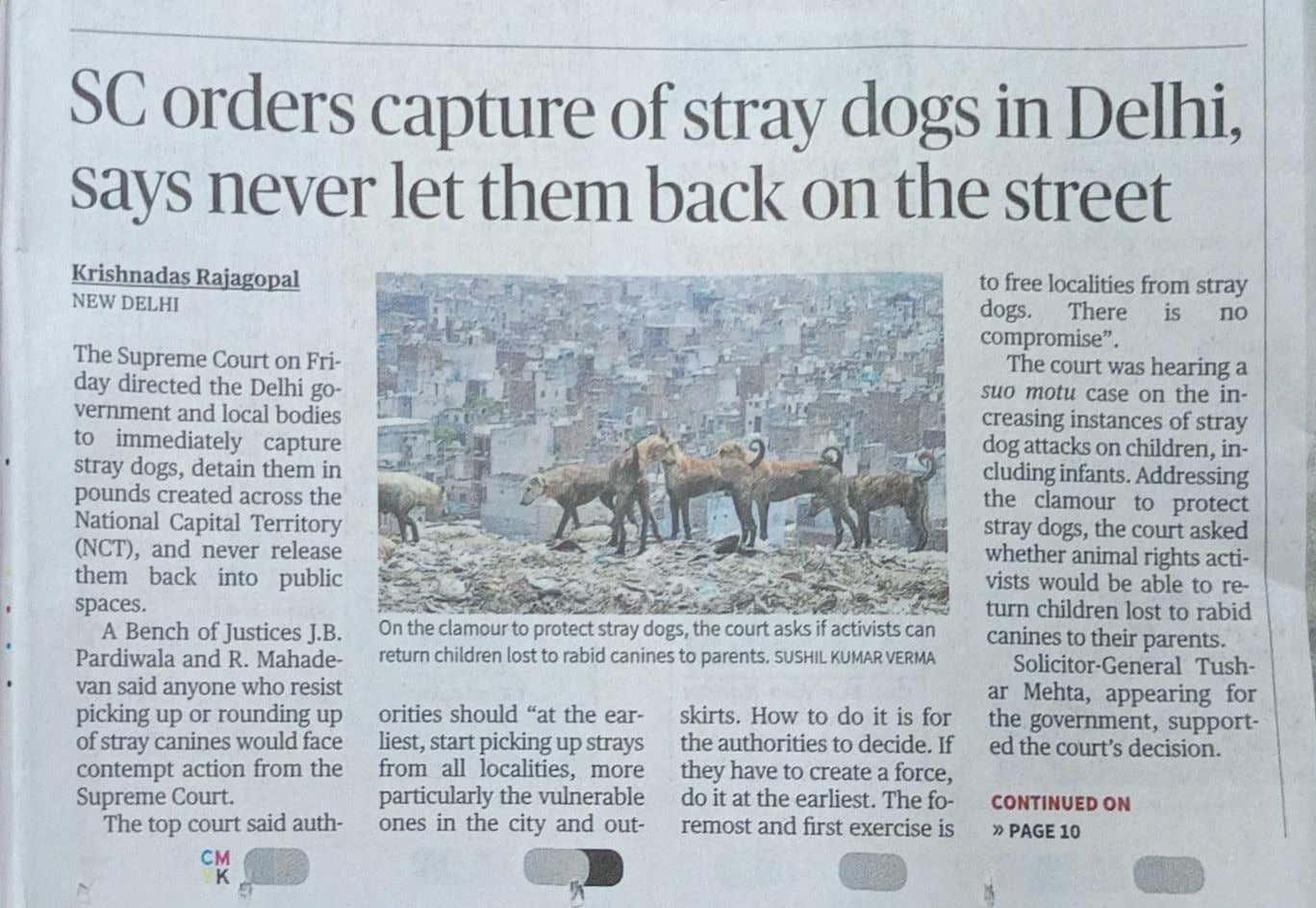A WELCOME MOVE TO ADDRESS THE STRAY DOG–HUMAN CONFLICT - A MATTER OF PUBLIC SAFETY AND HUMAN LIVES.
As a humanist, I have been following countless reports from across the country about the increasingly aggressive behavior of stray dogs toward people, instilling fear among both the young and the elderly. Social media is flooded with disturbing videos showing children being chased and attacked by street dogs. The media has also reported tragic cases of children mauled to death, chased into accidents, and subjected to the trauma of multiple anti-rabies injections—leaving entire families in deep anxiety and distress.
What is alarming is that these incidents have continued despite the Supreme Court’s “suo motu” intervention. We must appreciate the concern and commitment shown by the honorable judges in taking up this issue. For years, media reports went largely unheeded, and the administration failed to act decisively, often hampered by pressure from certain groups identifying themselves as “animal lovers,” who became an obstacle to resolving what is, at its core, a matter of public safety and human lives.
True animal lovers can demonstrate their compassion by adopting stray dogs or volunteering at animal care centers—constructive actions that protect both animals and the public.
We fully support the Supreme Court’s decision to begin tackling this serious issue, which has long affected the peace and safety of our communities. This is indeed a positive step toward restoring public confidence and ensuring harmony between humans and animals. - Jai hind more



















